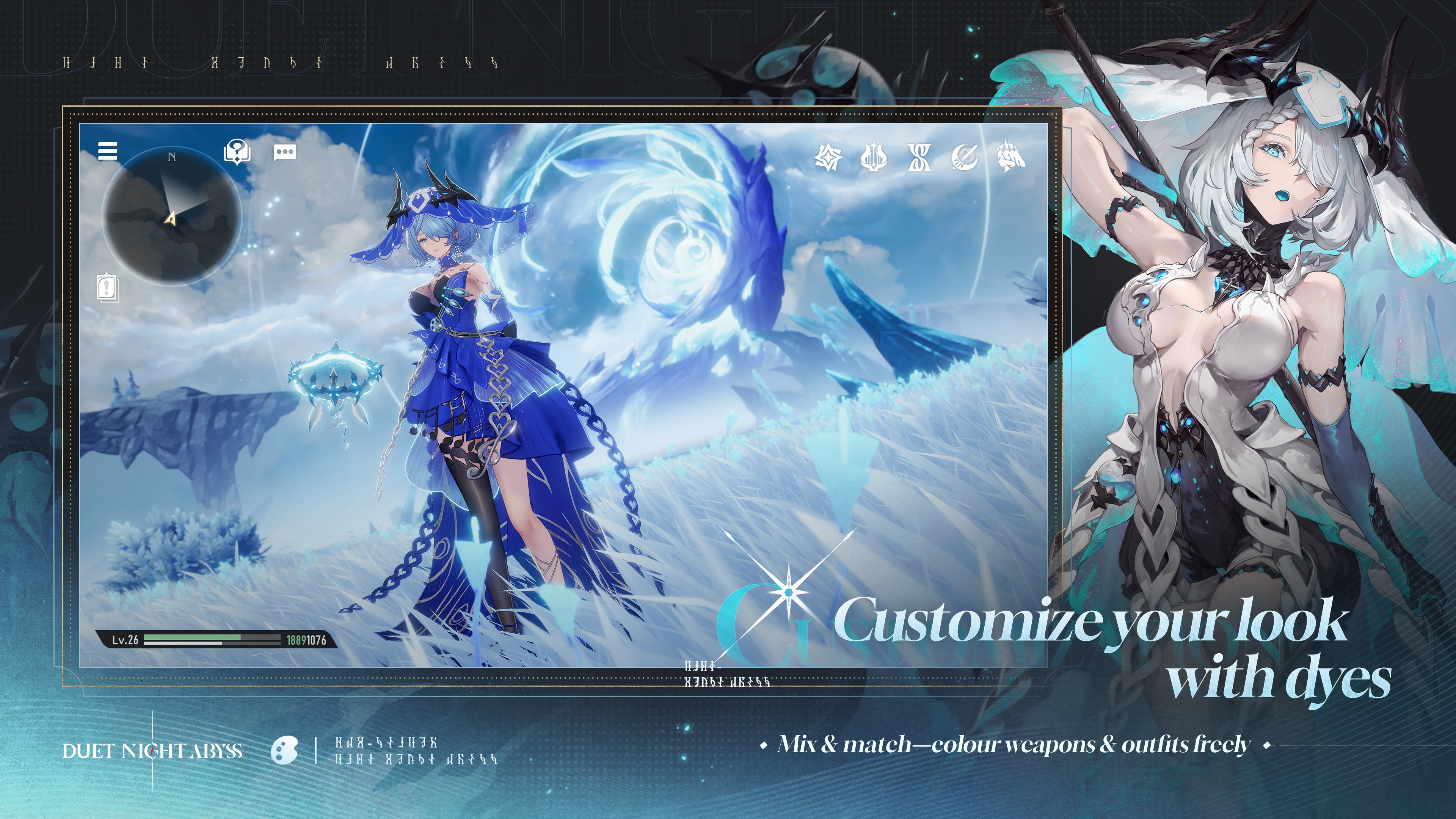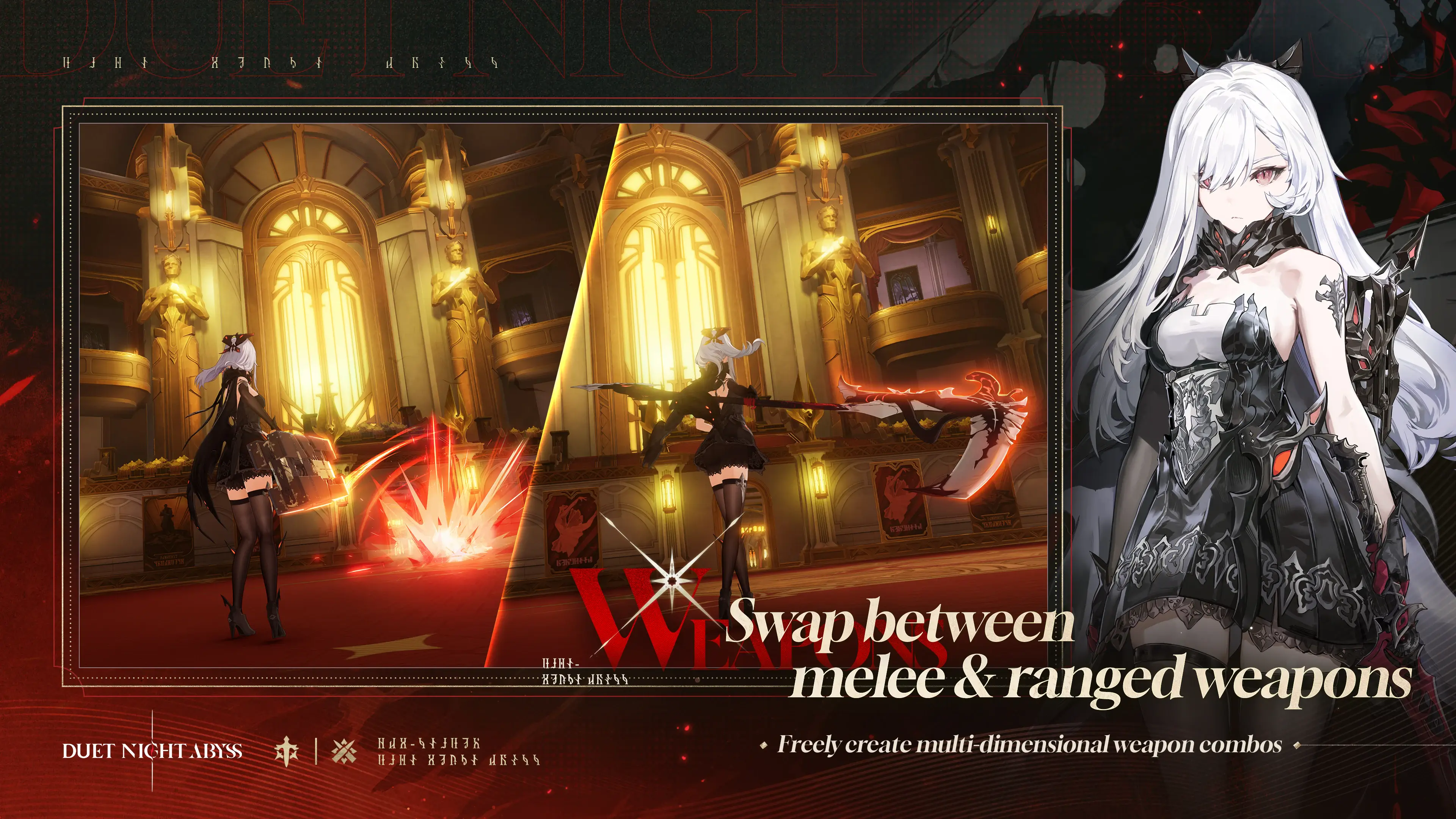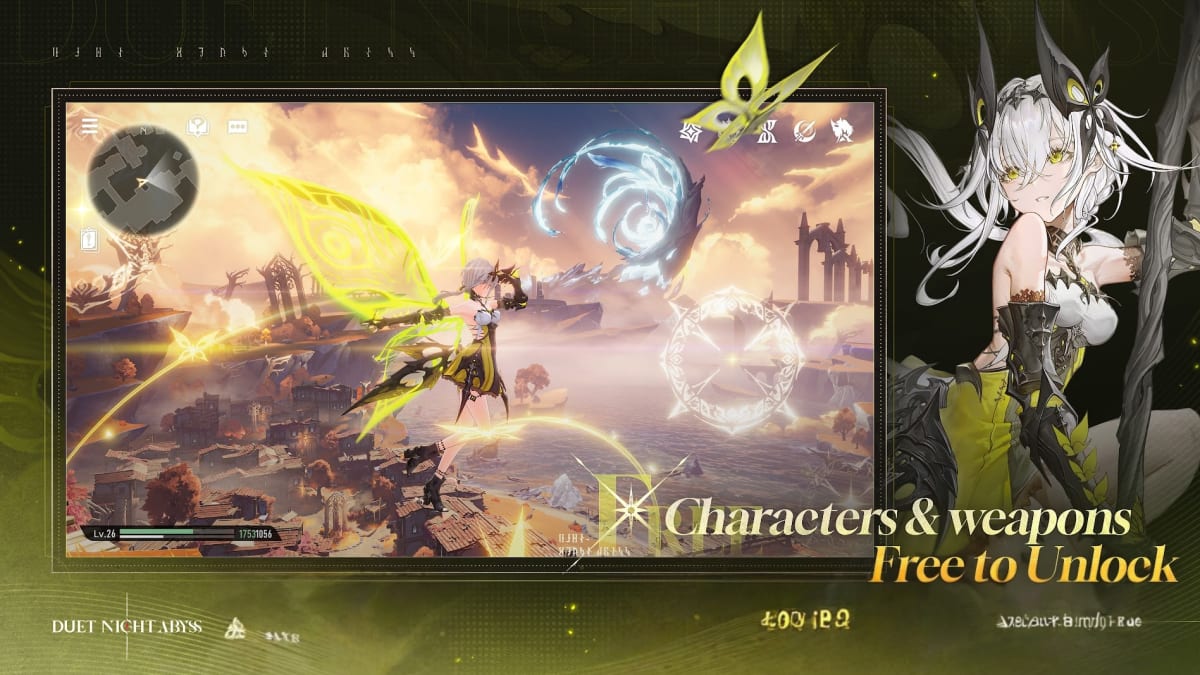Duet Night Abyss – Combat Guide and System Breakdown

Duet Night Abyss delivers one of the most fluid and skill-based combat systems in the action RPG genre. Set in the dualistic world of Atlasia, where the divine Elysian Church and the mechanical Hyperborean Empire clash, combat revolves around Phoxene energy — the radiant power of the Heaventrees that fuels all life and warfare.
Every encounter is a measured balance between precision and chaos. Melee and ranged combat coexist seamlessly, pushing players to master positioning, rhythm, and adaptability. Each swing, dodge, and shot feels alive with energy, creating a combat loop that rewards deliberate flow over random aggression.
The Core Combat Loop
Combat in Duet Night Abyss thrives on a triad of mechanics — weapon swapping, movement control, and Phoxene management. Each mechanic connects directly to the others, forming a rhythm where timing matters more than brute strength.
Key Combat Mechanics
- Dual Weapon System: Every character carries a melee and ranged weapon. Melee attacks generate Phoxene energy, while ranged attacks consume it. The constant switching between these states creates a natural rhythm — build with melee, release with ranged.
- Dodging and Helix Jump: Dodging grants invulnerability frames and resets combos when timed perfectly. Helix Jump, a slide-jump hybrid, enables aerial repositioning and plunge attacks, essential for vertical combat.
- Charged Attacks: Landing continuous strikes fills your combo meter, which can be spent on a charged attack for amplified Phoxene damage.
- Weapon Swap Cancels: Advanced players switch weapons mid-animation to skip recovery frames, maintaining unbroken flow.
- Stance Breaking: Heavy weapons and charged projectiles stagger enemies, exposing weak points and interrupting boss attacks.
These mechanics merge into a living system that adapts to your playstyle. Skilled players turn these tools into a performance, weaving dodges into attacks, swapping weapons between phases, and exploiting every second of opportunity.

Mobility and Spatial Control
Positioning defines success in Duet Night Abyss. Battles are not confined to flat arenas but stretch across vertical layers, giving players freedom to maneuver and attack from above.
The Helix Jump allows fluid repositioning mid-battle, transforming defense into offense. You can dive directly onto enemies for bonus plunge damage or retreat into the air to evade ground-based assaults. Meanwhile, properly timed dodges can turn lethal blows into openings for counterstrikes.
Boss encounters emphasize three-dimensional combat awareness. Many elite enemies unleash horizontal sweeps or explosive ground bursts that punish stationary players. Elevation and momentum become tools to control distance: jumping when they strike, dashing when they reload, and closing gaps when they stagger.

Phoxene Resonance and Energy Management
Phoxene governs the game’s tempo and it’s the rhythm that keeps combat alive. Building and consuming Phoxene in proper intervals ensures uninterrupted flow and maximum efficiency.
The energy builds naturally through melee strikes and dissipates through ranged attacks or skill usage. If your Phoxene bar glows bright, it means your resonance is strong — you’re synced with the rhythm. Letting it fade represents broken flow, forcing slower cooldowns and less powerful skills.
Phoxene management teaches players to fight consciously. It’s not about spamming attacks but knowing when to retreat, recharge, and strike again. The best players look less like button-mashers and more like dancers, moving to a tempo only they can feel.

Weapon Behavior and Combat Synergy
Weapons in Duet Night Abyss reflect their origin — faith versus science. The Elysian Church wields radiant relics that focus on precision and healing, while the Hyperborean Empire produces mechanical masterpieces for destructive warfare. Each weapon class offers a unique rhythm, influencing how you move and strike.
Melee weapons define close-quarters combat. The Whipsword (Undying Oneiros) excels at fluid combos and crowd control, while the Greatsword (Punitive Inferno) delivers heavy, deliberate hits that break stances. The Katana (Momiji Itteki) rewards timing and precision, turning defense into riposte opportunities.
Ranged weapons sustain pressure. The Dual Pistols (Bluecurrent Pulse) maintain consistent mobility, while the Assault Rifle (Flamme de Épuration) dominates at mid-range. The Bow (Arclight Apocalypse) specializes in long-range critical strikes, and the Grenade Launcher (Firearm Feast) turns chaotic fields into controlled detonations.
Each class contributes differently to combat synergy. By pairing light melee weapons with heavy ranged gear, or vice versa, you balance speed and power. Over time, this duality becomes the heartbeat of the game — faith and machinery, creation and destruction, always working in tandem.

Advanced Combat Flow
High-level combat in Duet Night Abyss demands pattern recognition and adaptability. Bosses telegraph attacks through glowing Phoxene cues. When the glow fades, the strike follows — that’s your signal to dodge and counter. Timing your charged attacks immediately afterward maximizes stagger potential.
Understanding flow also means knowing when to rest. Switching weapons after a combo not only cancels recovery animations but creates breathing space for defense. Efficient players don’t just fight continuously; they fight intelligently, pacing themselves to maintain rhythm and avoid over-committing.

Equipment Growth and Wedge Optimization
Demon Wedges enhance weapons and characters with passive modifiers, shaping how each player approaches combat. Their function mirrors Atlasia’s dual philosophies:
- Elysian Wedges: Improve elemental damage, healing, and Phoxene regeneration.
- Hyperborean Wedges: Increase critical hit rate, reload speed, and physical impact.
These Wedges are not simply upgrades — they are alignments. Choosing one type over another reflects your combat philosophy. A balanced build may combine both, embracing hybrid play that fuses faith’s resilience with science’s precision. Proper Wedge allocation transforms even basic weapon sets into deadly tools of artistry.
Practical Combat Tips
The following field-tested techniques summarize the essence of combat mastery:
- Control the Distance: Begin fights at range to observe patterns, then transition into melee when enemies expose weaknesses.
- Time the Swap: Weapon swapping mid-combo cancels animation lag and maintains DPS consistency.
- Attack After the Glow: Many bosses flash with Phoxene energy before attacks — dodge at the glow’s fade for perfect counters.
- Phoxene Recharge Cycles: Alternate melee and ranged rhythmically; overusing one side leads to energy collapse.
- Stay in Motion: Even when attacking, move. Side-step between strikes to avoid static positioning and incoming projectiles.

This discipline separates casual players from veterans. Those who treat combat as motion and music — flowing seamlessly between rhythm, position, and energy — will thrive in the world of Atlasia.
Every battle in Duet Night Abyss is an elegant performance between faith and power. The brilliance of its combat lies in its balance: fast but deliberate, complex yet intuitive. To master it is to understand rhythm itself — to move in harmony with Phoxene’s pulse.
With its precise aiming, smooth weapon transitions, and custom control mapping, the best way to experience this system is to play Duet Night Abyss on BlueStacks.
Keep progressing in Duet Night Abyss with our other in-depth guides:
















